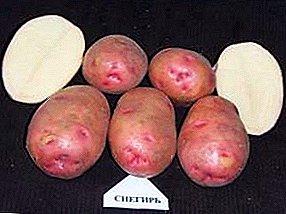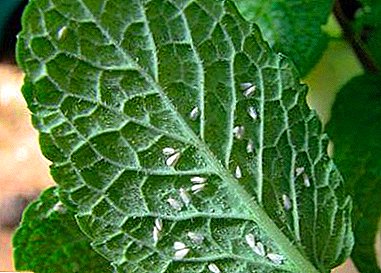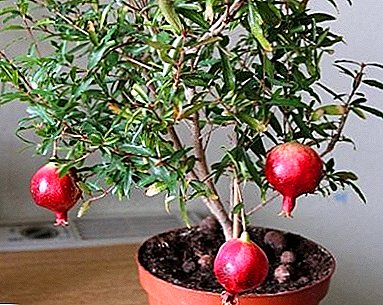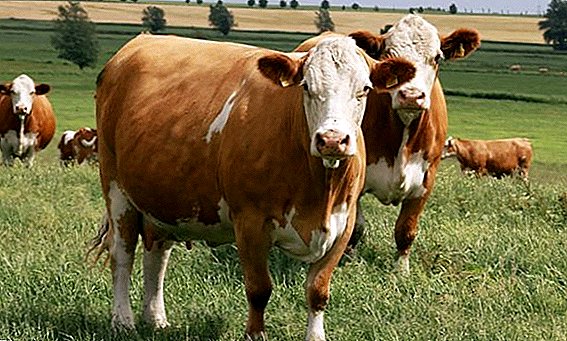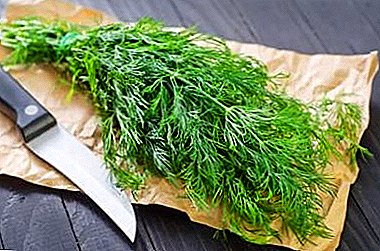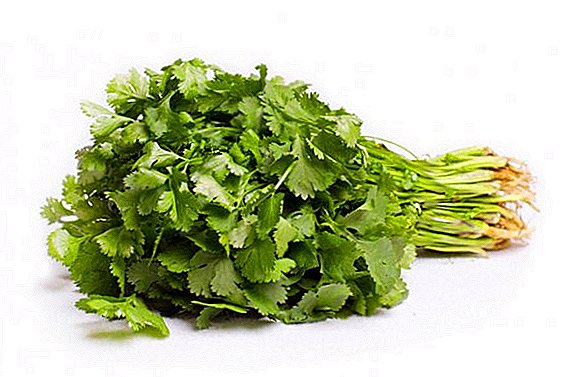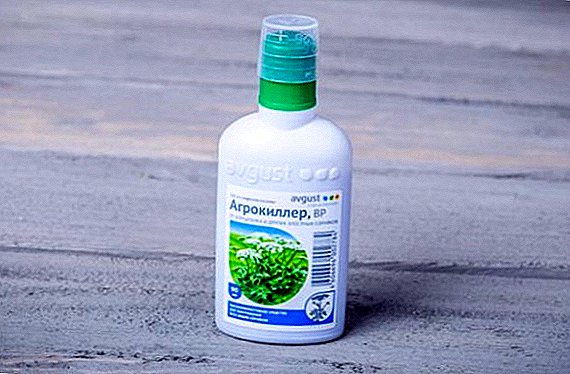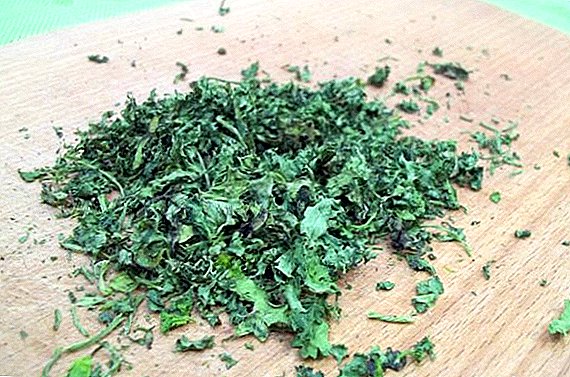 Among the most popular spices of our time is coriander, which is widely used in the culinary field, traditional medicine and even cosmetology. However, not only the seeds have useful properties, but also the aboveground part of this annual plant, which is popularly known as cilantro. What exactly this greens is useful for, how to prepare it correctly and for which dishes you can use in the future - this will be discussed in this article.
Among the most popular spices of our time is coriander, which is widely used in the culinary field, traditional medicine and even cosmetology. However, not only the seeds have useful properties, but also the aboveground part of this annual plant, which is popularly known as cilantro. What exactly this greens is useful for, how to prepare it correctly and for which dishes you can use in the future - this will be discussed in this article.
Features of the plant
Cilantro (another name for coriander known to all) is the leaves of an annual plant, which in their structure resemble parsley tops. In fresh form, they exude a very strong, unpleasant to many flavor, which is perfectly felt even far from the place where the culture grows. Stems of cilantro reach a height of 60-120 cm, and during the flowering period they form small numerous flowers of white or pink hue.
Did you know? The homeland of the plant is considered the territory of the Eastern Mediterranean, where, according to preliminary estimates, it appeared about 3000 years ago. In particular, this plant was grown to aromatize the hanging Babylonian gardens of Queen Amitis.
Coriander bloom is observed from July to August, after which fruits appear in the form of spherical kernels. They are more often used as a spice, although the leaves and root system of the mentioned plant will be equally useful. 
Beneficial features
All the beneficial properties of cilantro are explained by the rich chemical composition of this plant. So, in the green of the plant there are vitamins A, E, C, PP, group B, and also acids of organic origin, essential oils and mineral compounds: potassium, calcium, magnesium, sodium, iron, selenium, zinc, phosphorus. At the same time, the caloric content of coriander leaves is almost imperceptible and amounts to only 20 kcal per 100 g of product.
The main beneficial properties of this plant include:
- strengthening the body's defenses;
- anti-inflammatory and antiseptic effects;
- beneficial effects on the cardiovascular system, largely due to the ability to remove bad cholesterol, strengthen the walls of blood vessels and improve blood composition;
- lower blood sugar levels;
- positive effect on the digestive system due to its disinfection, improvement of intestinal motility, increased appetite and favorable removal of toxins;
- the removal of excess fluid from the body, which in some cases is useful for the kidneys and the urogenital system (only in the absence of large stones);
- anthelmintic action;
- optimization of metabolic processes and uniform distribution of adipose tissue;
- beneficial effect on vision (the plant contains a large amount of retinol useful for the eyes).
Important! In order to remove only benefit from cilantro, it is worth adhering to the norms of consumption of this plant: no more than 35 g of dry foliage per adult should be consumed per day.
Collection and preparation of cilantro
Determining the ideal time for collecting coriander greens is quite difficult, so it is recommended to focus on the condition of cilantro: as soon as its growth began to stop, but the flowering time has not come yet - it's time to take up the knife. Usually this moment comes when the stems reach 22-25 cm from the ground surface. If possible, cut the plant better in the morning, carefully making an incision a few centimeters above the ground.  After collecting, it remains only to rinse the cilantro well, dry it, and then bundle it up and hang it on a rope in a dark and well-ventilated room. In the sun, the foliage will quickly lose all its beneficial properties, so darkness is an important requirement for the room. Dried grass (not green) can already be crushed and packaged in sealed glass jars for seasoning, in order to use it on demand.
After collecting, it remains only to rinse the cilantro well, dry it, and then bundle it up and hang it on a rope in a dark and well-ventilated room. In the sun, the foliage will quickly lose all its beneficial properties, so darkness is an important requirement for the room. Dried grass (not green) can already be crushed and packaged in sealed glass jars for seasoning, in order to use it on demand.
How to dry greens and seeds at home
In fact, there are several ways to dry the coriander grass well and, in addition to drying the “bouquets,” you can use some others.
Did you know? The first mention of coriander on the territory of Russia dates back to the 18th century, when the plant was better known as “Kishnitsa”. It was used for a variety of purposes, but the most interesting fact remains the use as an aphrodisiac, which is mentioned in historical writings from different states.
The simplest and most convenient will be the following options:
- If you have time, then peeled cilantro can be divided into stems and leaflets, after which they can be spread out on various small sieves (one layer is obligatory), and then the “trays” with grass are brought to a warm and well ventilated roomprotected from direct sunlight. Dried raw materials are laid out on clean and dry cans - separate leaves and separate stems.
- Speed up the drying process will help electric dryer, thanks to which the grass retains its natural green color. If you choose the right mode, no problems should arise, as long as the temperature inside does not exceed + 50 ° C. About once an hour the dryer will have to be turned off in order to swap pallets and control the level of drying of the green mass. It is desirable to completely turn off the device approximately half an hour before the raw material dries so that it is dried in the open air. The finished raw material, as usual, is packaged in banks and sent to storage.
 As soon as this happens, you can proceed to the threshing of umbrellas, at the end of the process ridding the seeds of leaves and scales. The boundary shelf life of coriander is 1 year, but only if placed in a hermetically sealed container.
As soon as this happens, you can proceed to the threshing of umbrellas, at the end of the process ridding the seeds of leaves and scales. The boundary shelf life of coriander is 1 year, but only if placed in a hermetically sealed container.Features of the use of seasoning in cooking
For culinary purposes, coriander seeds are more often used, which usually become the highlight of baked goods and exotic sauces. Nevertheless, there are known cases of successful use of cilantro, in particular, when creating pilau with mushrooms, light chicken soup and the famous Georgian Tkemali sauce.
Vegetable pilaf with mushrooms and cilantro
For cooking this dish for 800-1000 g of rice should be 7-8 small bunches of fresh cilantro grass. Meat to the pilaf (if used) can be any: chicken, beef or pork, but standard champignons are perfect for the role of mushrooms (5 pieces are enough).
You will be interested to know how to dry herbs at home.
To improve the taste of the dish, you can use pepper, salt and ground cilantro seeds, only in small quantities. It will also be good to add onions and green onions, dill. Cilantro in this case brings a pleasant spicy flavor to the pilaf, a little reminiscent of the aroma of anise and citrus fruits. 
Light chicken soup with vegetables
In this variant of nourishing first courses, cilantro comes in addition to boiled chicken fillet, boiled eggs, carrots and onions, the taste of which will be complemented by a standard set of spices: salt, pepper, dried dill. In a two-liter saucepan and one medium ham, there are usually 1-2 small bunches of cilantro, which must be washed and chopped beforehand. In addition, small vermicelli and some potatoes are added to the chicken, which makes the dish much more satisfying.
Important! If there is no cilantro, you can use parsley for this recipe, but for a rich aroma and spicy taste, it is advisable to find coriander leaves.
Tkemali sauce
This mixture came to us from Georgia, where the sauce is used as a frequent addition to any kind of dishes. It is usually made from red or yellow plum or with the addition of thorns (the so-called green). The red version (based on plums) is more piquant, the green version is slightly sweeter and usually does without the addition of coriander leaves. In addition to them, the classic recipe includes the use of seasoning "hops-suneli", sugar, salt, red pepper and vinegar, and garlic is suitable for giving spiciness. 
At 4 kg of plum will be enough:
- 4 bunches of cilantro greens;
- 10-12 teeth of garlic;
- 5 tbsp. spoons of sugar (if the plum is sour, then its amount can be increased to 1 cup);
- 2 tbsp. spoons of salt.
Red pepper and vinegar are added to taste, as long as they do not obscure the spicy taste of cilantro and other spices.
Possible contraindications
Usually, the components of cilantro are well tolerated by humans, therefore, contraindications to its use are more relevant to those who have certain health problems.
First of all, these are people:
- suffered a heart attack or stroke;
- prone to thrombosis;
- having serious problems with the digestive tract.
Pregnant and lactating women should use spice only in limited quantities, carefully monitoring the state of their body and the reaction of the infant. In all other cases, with moderate consumption of spices, there are no contraindications.
Learn how to keep cilantro for the winter.
In general, dried cilantro is a good addition to almost any exotic dish, so when creating such culinary masterpieces you should not forget about the existence of this herb.


